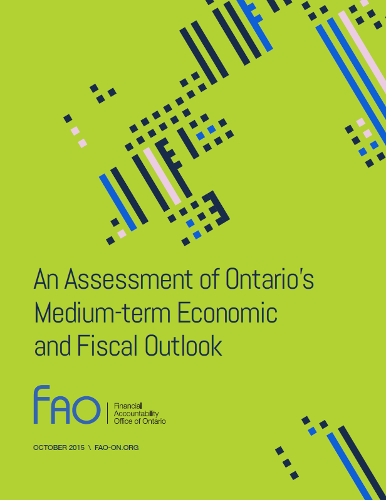An Assessment of Ontario’s Medium-term Economic and Fiscal Outlook

This is an independent analysis of the state of the government’s finances.
An Assessment of Ontario’s Medium-term Economic and Fiscal Outlook, Financial Accountability Office of Ontario, 2015.

